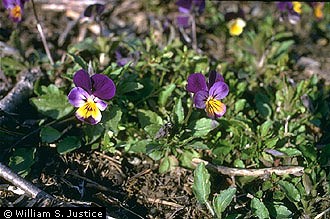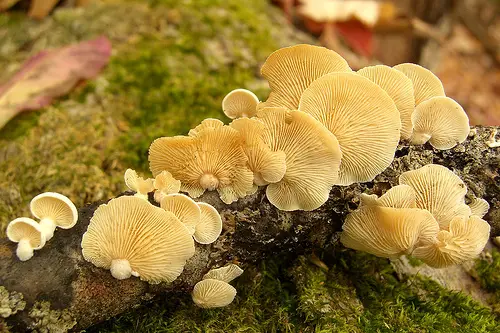Heartsease (Viola Tricolor)
Before the cultivated pansy was developed the wild pansy was the progenitor for the domesticated flowers that we know and plant today.
. Known also as the Johnny-jump-up; love-lies-bleeding; banwort and bull weed, the viola was brought to North America from Europe where it is a common weed and was in some places considered noxiious or invasive.. Some of the places where it is found include the following: Arctic Europe, Siberia, N.W. India and North Africa.

One of the best loved flowers, Violas are in some areas considered weeds
Heartsease is a perennial plant with the creeping habit that is properly grown some 15 cm aboveground, with 1.5cm(about one inche) purple, white and yellow flowers.Common areas where it is found include wasteland, farmland, preferring acid or neutral soils and partial shade. It flowers from April to September and can be blooming underneath a covering of snow. The flowers are pollinated by bees and self-fertile. The wild pansy protects itself from cold and rain by drooping so that only the back part of the flower gets wet from rain.
Shakespeare used reference to heartsease in his plays, Hamlet and Midsummer Night’s Dream, where they are meant to be respectfully a symbol of thought and to inspire love when the juice of the plant was laid upon the eyelids of a sleeping person. The sleeping person would fall madly in love with whichever creature it saw next.
The whole aboveground wild pansy herb is collected and dried. Wild pansy has been used to treat various skin diseases, eczema, asthma, epilepsy, acne impetigo and pruritus. It is thought to be of benefit to the heart. The photochemical that are important are violutoside, rutin, violanthin, orientin, scoparin and varied flavonoids and coumarin.
The roots and seeds produce an emetic.
In some parts of the United States this is considered and invasive weed and is listed in many southern states invasive weed web sites. Weed or wonder, the wild pansy, this beautiful plant is a delight because it blooms early and keeps coming up year after year, a cheerful token of springtime.



Where can I buy Viola Tricolor?